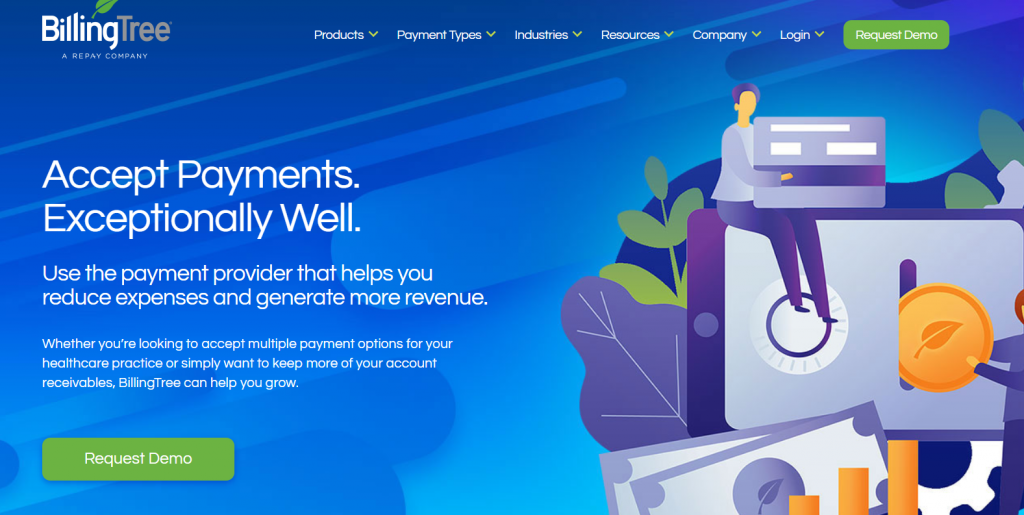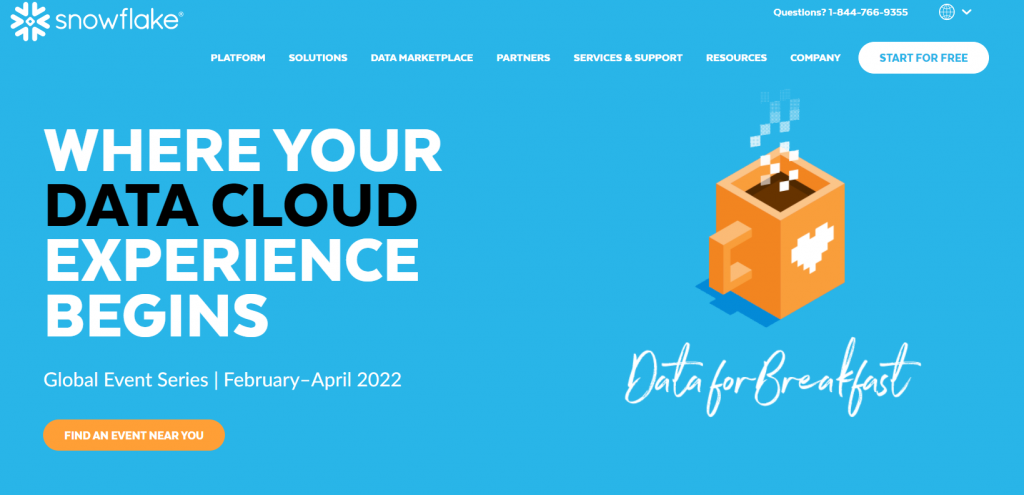5 Successful Account-Based Marketing Examples & Benefits
Back in the early days of digital marketing, business leaders and marketing gurus were constantly looking for new ways to attract more leads.
Nowadays, top marketers are focusing on attracting the right leads that fit the following criteria:
- Awareness of a specific need
- Authority to make a purchase decision
- Trust in your product and business
- High customer lifetime value
How can you attract more prospects that fit these criteria?
Account-based marketing can be the answer.
Not sure what it is?
No worries – we’ve got you covered with our guide on ABM and its benefits along with some inspiring examples of how other companies have leveraged this approach.
What is Account-Based Marketing (ABM)?
Account-based marketing (ABM) is a B2B marketing method that focuses on acquiring high-value accounts to turn them into loyal customers. On the surface, the premise is simple: instead of casting a wide net to capture as many leads as possible, you take a laser-focused approach to acquire the best possible customers for your business.
ABM campaigns are focused on generating the best possible return on investment when it comes to customer acquisition. With traditional digital marketing methods, you would also try to narrow down your search for top-quality leads, but with account-based marketing tactics you’re basically flipping the marketing funnel on its head to achieve better results.
Your salespeople and marketing teams need to work together to identify, reach, and nurture high-value accounts. Keep in mind that different target accounts might have a different number of key decision makers calling the shots as well as different pain points, which also demands that your sales team and marketing experts optimize the marketing approach to individual customer needs.
That means leveraging CRM tools such as HubSpot to collect relevant data, and turning to innovative content formats tailored to the individual customer. A client-centric webinar or a customized landing page, for example, can help draw a client to your business more than a generic ad or email templates sent out to large groups of people.
ABM doesn’t call for abandoning marketing automation with tools, either – it means focusing your efforts on specific leads rather than creating an ideal customer profile that represents a larger slice of your market.
We’re going to talk about all of this in more depth later on and through some account-based marketing examples, but now let’s take a look at the key differences between account-based marketing and traditional marketing.
What’s the difference between account-based marketing and traditional marketing?
Account-based marketing tactics are just as powerful and inbound tactics and you can even use inbound and ABM strategies together in your marketing efforts.
Remember that both are viable digital marketing strategies, but effective ABM can take your business and the buyer’s journey to the next level in the B2B sphere. With that in mind, here are the main differences between the two.
The key difference between ABM marketing and inbound marketing is that ABM marketing starts from the bottom of the traditional marketing funnel.

Account-based marketing campaigns start by identifying high-value accounts, after which your salespeople and marketing teams proceed to engage the leads with personalized communication. After that, you move on to building long-term relationships to maximize their CLV and the overall return on investment.
- Account-based marketing tactics cast a small net with laser-like precision. Like we mentioned before, ABM focuses on reaching out to specific prospects with specific messaging and personalized communication, instead of trying to generate as many leads as possible.
- Effective ABM marketing focuses on high-value accounts instead of markets or industries. You’re not optimizing your marketing efforts or sales cycle for the entire market, you’re optimizing for the individual customer and their unique needs to deliver a highly-specialized solution.
- An ABM strategy will focus on acquisition as well as account expansion. Another goal here is to acquire new customers as well as expand existing accounts, identifying new opportunities for cross-selling, up-selling, and general account growth.
Let’s visualize this comparison through a nifty little graph (feel free to save it for future reference):

Now that you know what account-based marketing is about, let’s take a look at some of the key benefits that this marketing approach brings to the table.
5 Benefits of Account-based Marketing
You might be thinking “What’s in it for me and why should I start investing in ABM marketing if I already have a decent digital marketing strategy?”. Well, there are many reasons why account-based marketing should be one of your top marketing tools in 2022.
Here are some of the benefits that every sales team, marketing expert, and all decision makers should consider.
Benefit #1: Improve and maintain stellar customer experience
Cookie-cutter solutions don’t work anymore in the B2B sphere, or the B2C sphere for that matter. If you are to maximize the power and potential of ABM efforts on LinkedIn, Facebook, and all other communication channels, you have to focus on delivering a consistent customer experience.
The good part is that consistent CX is a foundational element of account-based marketing, allowing you to create a winning B2B content marketing strategy, among other powerful campaigns. Because it focuses on the account and its unique needs and goals, effective ABM tactics employ personalization and specialized marketing campaigns to make every account feel like they are your no.1 priority.
Being your top priority will cultivate a sense of delight and long-term satisfaction from your clients, allowing you to grow your accounts and your business.
Benefit #2: Align your sales team with your marketing department
If you are to effectuate a winning B2B lead generation strategy and maximize the long-term value of every lead and prospect, you have to narrow down your focus and align sales with marketing. There is no other way around it – your sales team and marketing department need to work closely together to convert high-value accounts.
ABM marketing keeps your sales cycle aligned with your marketing efforts, ensuring that both teams are working towards the same goals, that they understand the roles of internal stakeholders, and that they’re working within the budget capabilities.
Most importantly for your target accounts and their happiness, this kind of alignment will ensure consistency in communication, content marketing, and interactions across all touchpoints.
Benefit #3: Measure your return on investment
Measuring the ROI on your marketing efforts as a whole can be a daunting task, but ABM marketing allows you to easily measure the return on investment by focusing on specific high-value accounts. Because you have invested time, effort, and other resources in individual leads and prospects instead of groups of leads, you’re able to measure the ROI for each.
In our comprehensive lead generation guide, we talk a lot about what it takes to attract qualified leads, but you have to make sure that your investment was worth it. By focusing on a narrow target demographic, you’re able to keep all your expenses in check and optimize your investments.
Benefit #4: Optimize and shorten your sales cycle
Like we mentioned before, account-based marketing strategies flip the traditional marketing funnel on its head, and that has the added benefit of shortening the overall sales and marketing cycle. Typically, you would first need to create a lead list that you’d use to connect with the target audience, do your research, follow up and maintain communication, nurture and eventually convert them into paying customers.
And that’s in a nutshell, but we all know how long the sales cycle can be when using a traditional funnel.
On the other hand, account-based marketing campaigns use a shorter cycle by:
- Identifying key target accounts.
- Presenting to high-value accounts and prospects.
- Closing the deal.
- Delighting the accounts.
It’s a much more streamlined experience for everyone involved, and needless to say, it will help you minimize financial waste in the process.
Benefit #5: Grow your business by growing your target accounts
There are plenty more benefits we could mention here, but before we move on to the best ABM marketing examples, let’s mention the fact that this is a great way to grow your key accounts. Remember, quality trumps quantity in the B2B world, but also in the B2C realm nowadays when you’re focusing on identifying marketing quality leads.
A big part of account-based marketing is working actively on growing high-value accounts through upselling and cross-selling, careful relationship nurturing, and personalized solutions. All of this inspires the account to become and stay your lifelong brand ambassador, but also to invest more money in your products and services.
By growing your accounts and maximizing their value, you’re effectively growing your business in the process.
Okay, you understand ABM marketing, you know what it brings to the table, now we’ve got a few amazing real-world examples to inspire you to create your own account-based marketing campaigns this year!
1. VersionOne

VersionOne is an ALM (application lifecycle management) provider, and they have managed to double their sales opportunities with account-based marketing campaigns.
Challenge:
Traditional inbound marketing proved too expensive in manpower and financial resources, so VersionOne had to invest in a more effective and affordable marketing strategy. The inability to outperform their competitors in the inbound marketing game pushed the company to transition to ABM marketing.
Solution:
VersionOne utilized account-based marketing primarily to align their salespeople with their marketing teams to:
- Streamline the sales process.
- Build trust with high-value accounts.
- Leverage a data-driven approach to minimize financial waste.
- Personalize communication and their approach to account management.
- Improve the segmentation of key accounts.
Through this type of sales and marketing alignment, the company was able to build the sales and marketing pipeline, and achieve some notable results.
Results:
Through their ABM marketing efforts, VersionOne increased the specific account engagement by 88%. Likewise, they were able to increase their opportunity size by 45%, and double their sales opportunities.
2. GumGum

GumGum is one of the most popular examples of effective ABM marketing, and we would be remiss not to mention how this contextual intelligence company landed a huge client like T-Mobile.
Challenge:
The primary challenge here was getting on T-Mobile CEO John Legere’s radar, which was no small feat. Instead of trying to pursue John via traditional communication channels and pray to get a meeting with him, they decided to go all out with a personalized ABM campaign.
Solution:
GumGum stakeholders quickly found out that John Legere was active on social media, and that he was a big graphic novel fan – specifically Batman. So, what did GumGum do? They commissioned a graphic novel called T-Man and Gums the Girl Wonder, with John obviously being the Batman-like protagonist and superhero.
Talk about going all in to grab someone’s attention online, right?
Results:
As you can guess, the results were quite positive. Not only did John Legere notice and appreciate the effort, he also gave GumGum a big shoutout online, while T-Mobile quickly became one of GumGum’s high-value accounts.
3. DocuSign

DocuSign is a well-known transaction management solution provider, but the company was facing unique challenges it could only overcome with effective ABM.
Challenge:
The challenges and goals were clear:
- Drive more traffic.
- Increase CTR.
- Boost conversation percentage from high-value accounts.
Solution:
DocuSign’s ABM campaign was a comprehensive one. The company implemented highly-targeted display ads to more than 450 enterprise-level accounts, with highly-personalized messages and visuals. These messages targeted specific accounts at their specific buying stages.
Targeting six different industries, DocuSign used personalized messages, testimonials, case studies, white papers, peer logos, and more. They also scaled back their questionnaires and instead focused on capturing web analytics and content optimization.
Results:
Doing this, DocuSign increased their engagement rate by 59%, while boosting page views more than 300%. What’s more, they were able to decrease the bounce rate to 13.5% from an average of 39.25% while seeing a 22% increase in the sales pipeline across the six targeted industries.
4. BillingTree

BillingTree is one of the most popular payment processing platforms out there, but traditional inbound marketing just wasn’t delivering results. BillingTree had very specific needs, after all.
Challenge:
The key challenge was getting decision makers on a call or into a meeting, not their gatekeepers. Unfortunately, most of the meetings that they managed to set up were with the people who had no power to make any decisions. In other words, BillingTree was unable to close high-value accounts because they couldn’t get through to the key actors in the company.
Solution:
BillingTree then developed a very unique ABM strategy. They sent 100 locking cases via direct mail to 100 key accounts that they designed and manufactured specifically for each prospect. Inside, the recipient found a branded interior with an attached video player, carrying a personalized pitch. The pitch kicks off when the lid of the padlock is opened.
Talk about creativity and wit.
Results:
As you can imagine, this creative marketing approach delivered some amazing results. Account engagement rate skyrocketed 60%. Conversion opportunity rose 15% while total revenue worth in the pipeline was $200,000. The total Revenue of closed opportunities was $159,902.
5. Snowflake

As a leading data warehouse provider in the cloud, Snowflake empowers companies to leverage data-driven solutions as well as bespoke cloud solutions to run their business digitally. But there was a problem – their ads were performing poorly.
Challenge:
Running Google Ads can be expensive if people click but don’t buy. You’re also wasting your money and marketing potential if people aren’t clicking on your ads at all, which is what was happening to Snowflake.
They needed a way to make their ads more relevant and impactful to get high-value accounts.
Solution:
Snowflake developed account-based marketing campaigns by empowering close collaboration between ABM experts and the salespeople who had a deep knowledge of each of the key accounts.
Then, they started developing unique ads that targeted specific high-value accounts at specific times. Followed by optimized re-targeting and incentives like free demos for these accounts, the company saw substantial results within 15 months.
Results:
Ad CTR increased 150% while the overall account growth rate was 300%. They also added new salespeople to their organization and raised $500 million for additional growth.
Now Over to You
Account-based marketing tactics are powerful tools you can use along with or instead of inbound marketing to push your organization forward.
Now that you know what ABM marketing is all about, are you going to implement it in your 2022 strategy? Be sure to check out our blog for comprehensive marketing guides and tips that will help you put ABM into effect and streamline your marketing process as a whole!
Frequently Asked Questions (FAQs)
Got some questions about account-based marketing? Take a look at these common questions and find the answers you need to start growing your business with ABM.
Q1. How is account-based marketing used?
Account-based marketing aligns sales teams and marketing departments to work together to find high-value accounts, personalize communication and customer experience, and lead each account through the pipeline.
Q2. What companies use account-based marketing?
Companies across many industries leverage ABM, but B2B companies with a large deal size, long sales cycles and specific solutions for their customers benefit from this approach the most. Even more so if they aim at developing long-term client relationships based on loyalty and trust.

Nikola is a seasoned brand developer, a writer, and a storyteller. Over the last decade, he’s worked on various marketing, branding and copywriting projects – crafting plans and strategies, writing creative online and offline content, and making ideas happen.
He loves exploring new topics to turn into engaging stories for the online community.
